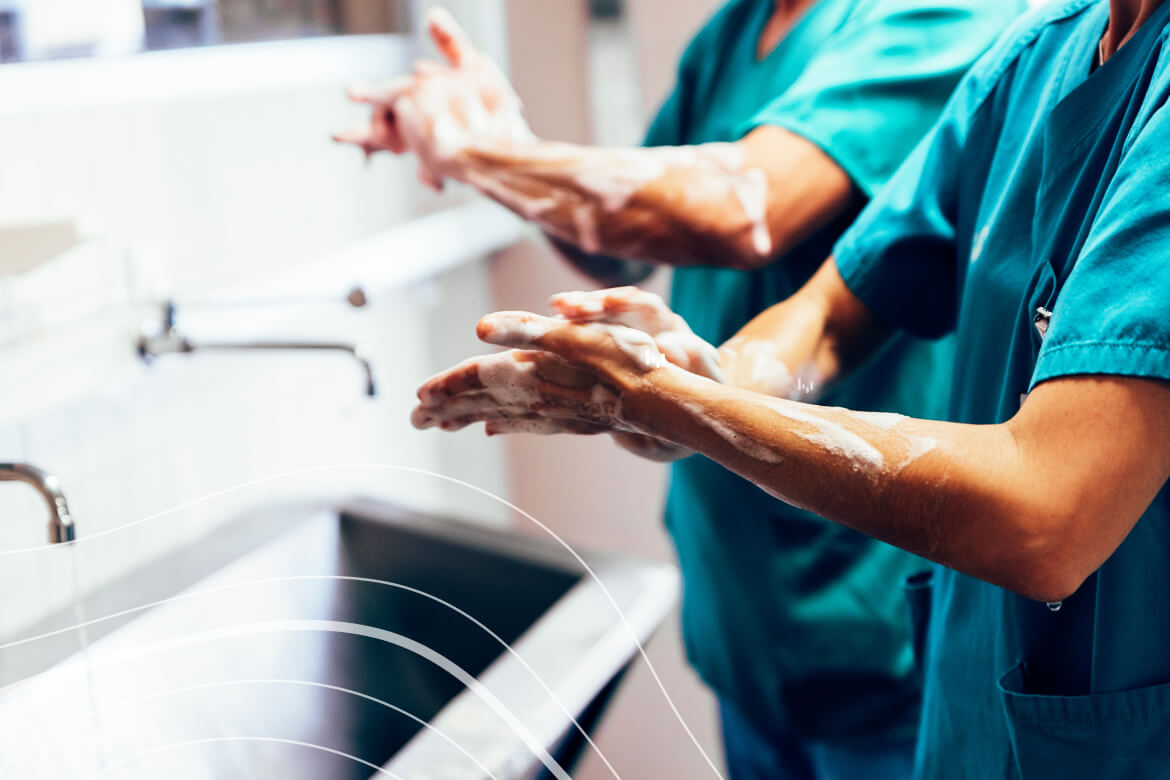Accreditation surveys are a crucial aspect of maintaining the highest standards in healthcare facilities. Compliance with hand wash hygiene practices is particularly important in preventing the spread of infections. Let’s explore the essential steps to prepare for an accreditation survey, focusing on the significance of hand wash hygiene for patient safety and staff well-being.
Accreditation surveys are structured evaluation processes conducted by regulatory bodies to assess healthcare facilities’ compliance with industry standards. These surveys ensure that facilities maintain the highest levels of quality care, patient safety, and infection control. Failure to meet these standards can have serious consequences, including loss of accreditation and trust.
Simply Said: Wash Your Hands
Hand wash hygiene is a critical component of infection control and prevention. It is essential not only for healthcare professionals but also for patients and visitors. Proper hand washing helps break the chain of infection transmission, reducing the risk of healthcare-associated infections. As simple as it sounds, there are several ways to prepare and set the facility up to make this important process of handwashing easier for both staff and patients.
Here are some things to keep top-of-mind, with Surglogs’ complete hand hygiene checklist at the end!
Download Hand Hygiene Monitoring Audit
We will handle your request in accordance with our Privacy Policy
Preparing for Hand Wash Hygiene Compliance
Sink Accessibility
Ensure that hand hygiene sinks are easily accessible to all staff and patients. They should be strategically located throughout the facility, especially in high-traffic areas and near patient care areas. The sinks should be easy to access and never used for any other purpose.
Proper Labeling and Signage
All sinks should be properly labeled to indicate their purpose. Clear labeling helps remind individuals to wash their hands and facilitates easy identification of the sinks. Make sure signs are posted, as well as instructional signs.
Water Temperature and Running Supply
Check that the water at hand hygiene sinks is running smoothly and at a warm temperature. Warm water promotes effective handwashing, while continuous running water prevents contamination. According to the CDC, scrubbing with soap and water for a minimum of 20 seconds is ideal to remove harmful germs and chemicals.
Stocking Supplies
Regularly check and replenish hand hygiene dispensers with soap and paper towels. Empty dispensers can hinder proper handwash hygiene, so ensuring an adequate supply is crucial. Assign a task to regularly check supplies throughout the day and be sure all stations are handwash ready. Disposable paper towels should always be used as well.
Non-Antimicrobial Soap
Use non-antimicrobial soap at handwashing sinks. Antimicrobial soap should be reserved for specific situations, as overuse can lead to antimicrobial resistance.
Dry and Good Condition Paper Towels
Be sure that paper towels at hand hygiene sinks are dry and in good condition. Wet or torn paper towels can be ineffective and discourage proper hand drying. Having an easy to refill paper towel dispenser is an effective way to store them right near the sink.
Clean and Clutter-Free Sinks
Maintain cleanliness and remove any clutter around hand hygiene sinks. A clean and well-organized sink area promotes good hygiene practices and reduces the risk of contamination.
Regular Cleaning and Disinfection
Implement a regular cleaning and disinfection schedule for sinks. Proper cleaning practices help maintain a hygienic environment and prevent the buildup of pathogens.
Staff and Patient Education
Effective education on hand wash hygiene is crucial for both staff and patients. Conduct regular training sessions to reinforce the importance of handwashing techniques, duration, and frequency. Highlight the role of hand wash hygiene in infection prevention and control. Keep reminders near stations that show diagrams of the proper handwashing steps.
Compliance Monitoring and Evaluation
Establish a system to monitor and evaluate handwash hygiene compliance among staff and patients. Regular audits, observations, and feedback mechanisms can help identify areas for improvement and reinforce positive practices.

The Complete Hand Hygiene Checklist:
By following this checklist, you can help ensure that your facility is in compliance with hand hygiene standards and is prepared for an accreditation survey.
- Are hand hygiene sinks easily accessible to all staff and patients?
- Are hand hygiene sinks properly labeled?
- Is the water at hand hygiene sinks running and warm?
- Are hand hygiene dispensers stocked with soap and paper towels?
- Is the soap at hand hygiene sinks non-antimicrobial?
- Are paper towels at hand hygiene sinks dry and in good condition?
- Are hand hygiene sinks free of clutter?
- Are hand hygiene sinks cleaned and disinfected regularly?
- Are staff and patients educated on the importance of hand hygiene?
- Do staff and patients comply with hand hygiene standards?
Preparing for an accreditation survey requires comprehensive attention to hand-wash hygiene compliance. Adhering to the guidelines outlined in Surglogs‘ checklist can ensure that your healthcare facility maintains the highest standards in infection prevention and control. By prioritizing good handwashing hygiene, healthcare professionals, patients, and visitors can work together to create a safe and healthy environment. Remember, hand wash hygiene is not just a checklist item; it is an essential practice that saves lives.
